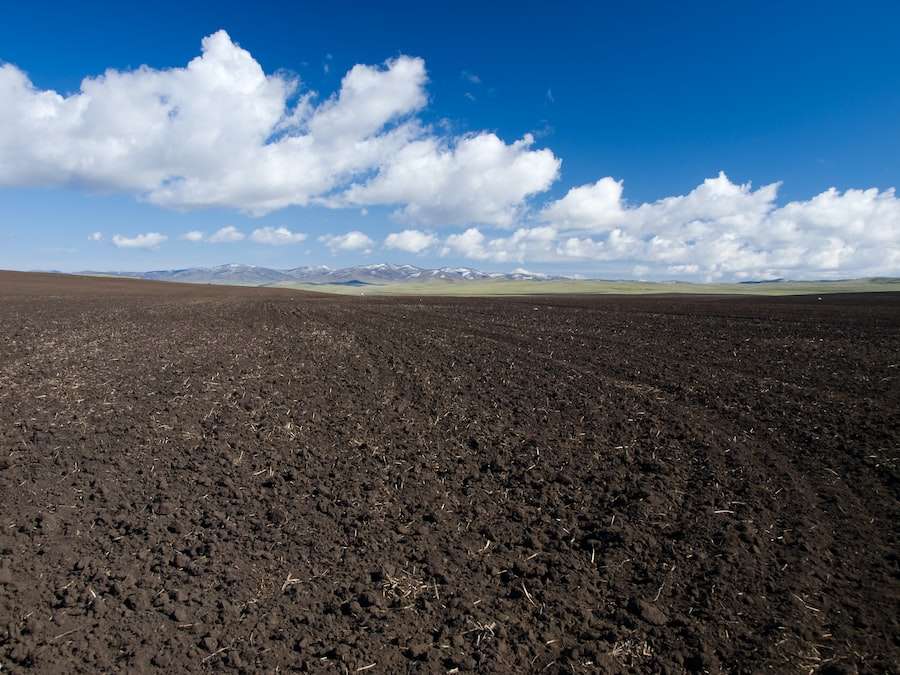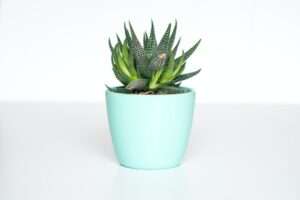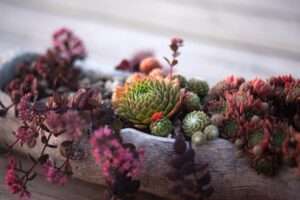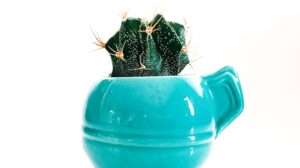Succulent plants have gained popularity in recent years due to their unique and beautiful appearance. These plants are known for their ability to store water in their leaves, stems, and roots, allowing them to survive in arid conditions. However, in order for succulents to thrive, they require specific soil conditions that mimic their natural habitat.
Succulent soil, also known as cactus soil or succulent mix, is a specialized type of soil that is designed to meet the unique needs of succulent plants. It is typically a well-draining soil that allows excess water to flow out quickly, preventing root rot and other moisture-related issues. Additionally, succulent soil is formulated to retain just the right amount of moisture for succulents, as these plants do not tolerate overly wet conditions.
Understanding the Importance of Soil for Succulent Growth
Soil plays a crucial role in the growth and overall health of succulent plants. It provides essential nutrients, water, and oxygen that are necessary for their survival. The right type of soil can help prevent issues such as root rot and overwatering, which can be detrimental to succulents.
Nutrients: Succulent soil should be rich in nutrients that are essential for plant growth. These include macronutrients such as nitrogen, phosphorus, and potassium, as well as micronutrients like iron and magnesium. The nutrients in the soil are absorbed by the roots of the succulents and used for various metabolic processes.
Water: Succulent plants have adapted to survive in dry conditions by storing water in their leaves, stems, and roots. However, they still require regular watering to replenish this water supply. The right type of soil will allow water to penetrate the roots and be stored in the plant’s tissues without causing root rot or other moisture-related issues.
Oxygen: Like all plants, succulents require oxygen for respiration. The right type of soil will allow for proper aeration, ensuring that the roots have access to oxygen. This is especially important in succulent plants, as their roots are prone to rot if they are constantly sitting in waterlogged soil.
What Makes Succulent Soil Different from Regular Soil?
Succulent soil differs from regular potting soil in several ways. The main difference lies in its ability to drain quickly and retain moisture. Regular potting soil is typically formulated to retain moisture for longer periods of time, which can be detrimental to succulents that prefer drier conditions.
Succulent soil is typically made up of a mixture of organic materials such as peat moss, coconut coir, and compost, as well as inorganic materials like perlite or pumice. These inorganic materials help to improve drainage and prevent the soil from becoming compacted.
Regular potting soil, on the other hand, is often composed of a mixture of peat moss, vermiculite or perlite, and compost. While this type of soil is suitable for a wide range of plants, it may not provide the ideal conditions for succulents.
The Role of Drainage in Succulent Soil
Good drainage is crucial for succulent soil because it helps prevent root rot and other moisture-related issues. Succulents are adapted to survive in arid conditions and do not tolerate overly wet soil. When water is unable to drain properly, it can lead to the accumulation of excess moisture around the roots, which can cause them to rot.
To ensure proper drainage in succulent soil, it is important to use a well-draining potting mix that contains materials such as perlite or pumice. These materials help create air pockets in the soil, allowing excess water to flow out quickly.
In addition to using a well-draining potting mix, it is also important to choose a pot with drainage holes. This will allow excess water to escape from the bottom of the pot, further preventing waterlogged soil.
Ideal pH Levels for Succulent Soil
pH levels play an important role in succulent soil as they affect the availability of nutrients to the plants. The ideal pH range for succulents is typically between 6.0 and 7.0, which is slightly acidic to neutral.
If the pH of the soil is too high or too low, it can affect the plant’s ability to absorb nutrients. In alkaline soil (pH above 7.0), certain nutrients may become less available to the plants, leading to nutrient deficiencies. On the other hand, in acidic soil (pH below 6.0), certain nutrients may become more available but can also lead to imbalances and toxicity.
To maintain the ideal pH levels for succulent growth, it is important to regularly test the soil using a pH testing kit. If the pH is too high, it can be lowered by adding organic matter such as compost or peat moss. If the pH is too low, it can be raised by adding lime or dolomite.
Choosing the Right Type of Soil for Your Succulents

When choosing soil for your succulents, it is important to consider their specific needs and requirements. There are several different types of succulent soil available on the market, each with its own unique characteristics.
Cactus mix: Cactus mix is a popular choice for succulent soil as it is specifically formulated for cacti and other succulent plants. It typically contains a mixture of organic materials such as peat moss or coconut coir, as well as inorganic materials like perlite or pumice. Cactus mix provides excellent drainage while retaining just the right amount of moisture for succulents.
Sandy soil: Sandy soil is another option for succulent plants, especially those that are native to desert regions. Sandy soil drains quickly and does not retain moisture for long periods of time, making it ideal for succulents that prefer drier conditions. However, sandy soil may require more frequent watering as it does not retain moisture as well as other types of soil.
DIY succulent soil: If you prefer to make your own succulent soil, you can do so by mixing equal parts of potting soil, perlite or pumice, and coarse sand. This mixture provides good drainage while retaining some moisture for the plants.
When choosing the right type of soil for your succulents, it is important to consider factors such as the specific needs of your plants, the climate in which they will be grown, and your own personal preferences.
Adding Nutrients to Succulent Soil
While succulent plants are generally low-maintenance and do not require a lot of fertilization, they may still benefit from additional nutrients in their soil. Over time, the nutrients in the soil can become depleted, especially if the plants are grown in containers.
To add nutrients to succulent soil, you can use a slow-release fertilizer specifically formulated for cacti and succulents. These fertilizers release nutrients slowly over time, providing a steady supply of nutrients to the plants. It is important to follow the instructions on the fertilizer package and not to over-fertilize, as this can lead to nutrient imbalances and damage to the plants.
Another option for adding nutrients to succulent soil is to use compost. Compost is rich in organic matter and nutrients and can help improve the fertility of the soil. You can mix compost into the soil before planting or use it as a top dressing around the base of the plants.
How to Prepare Succulent Soil for Planting
Properly preparing succulent soil before planting is essential for the health and growth of your succulent plants. Here are some step-by-step instructions for preparing succulent soil:
1. Choose a well-draining potting mix: Select a potting mix that is specifically formulated for succulents or cacti. These mixes are typically composed of a mixture of organic materials such as peat moss or coconut coir, as well as inorganic materials like perlite or pumice.
2. Sterilize the soil: Before planting, it is important to sterilize the soil to kill any pathogens or pests that may be present. This can be done by baking the soil in the oven at 180°F (82°C) for 30 minutes or by microwaving it on high for 2-3 minutes.
3. Ensure proper drainage: To ensure proper drainage, choose a pot with drainage holes at the bottom. This will allow excess water to escape from the pot, preventing waterlogged soil.
4. Fill the pot with soil: Fill the pot with succulent soil, leaving enough space at the top for watering. Gently tap the pot on a hard surface to settle the soil and remove any air pockets.
5. Plant your succulents: Carefully remove your succulents from their nursery pots and gently loosen the roots. Place them in the prepared pot, making sure that the roots are covered with soil.
6. Water thoroughly: After planting, water the succulents thoroughly until water drains out from the bottom of the pot. This will help settle the soil and ensure that it is evenly moist.
Maintaining Succulent Soil Health and Fertility
Maintaining healthy and fertile succulent soil is essential for the long-term health and growth of your succulent plants. Here are some tips for maintaining soil health:
1. Watering: Succulents require regular watering, but it is important not to overwater them. Allow the soil to dry out completely between waterings to prevent root rot. The frequency of watering will depend on factors such as the climate, the type of succulent, and the size of the pot.
2. Fertilization: While succulents do not require a lot of fertilization, they may benefit from occasional feeding. Use a slow-release fertilizer specifically formulated for cacti and succulents, following the instructions on the package. Avoid over-fertilizing, as this can lead to nutrient imbalances and damage to the plants.
3. Soil amendments: Over time, the nutrients in the soil can become depleted. To replenish these nutrients, you can add compost or organic matter to the soil. This will help improve soil fertility and provide a steady supply of nutrients to the plants.
4. Mulching: Mulching can help conserve moisture in the soil and prevent weed growth. Use a layer of organic mulch such as wood chips or straw around the base of the plants, being careful not to cover the leaves or stems.
Troubleshooting Common Soil Issues for Succulents
Despite your best efforts, you may encounter some common soil issues when growing succulents. Here are some tips for troubleshooting and resolving these issues:
1. Overwatering: Overwatering is one of the most common issues that succulent growers face. To prevent overwatering, allow the soil to dry out completely between waterings and ensure that the pot has proper drainage. If you notice signs of overwatering such as yellowing leaves or mushy roots, reduce watering and allow the soil to dry out.
2. Poor drainage: If you notice that water is not draining properly from your succulent soil, it may be due to poor drainage. Check that your pot has drainage holes at the bottom and consider repotting your succulents in a well-draining potting mix.
3. Nutrient deficiencies: If your succulents are showing signs of nutrient deficiencies such as yellowing leaves or stunted growth, it may be due to a lack of nutrients in the soil. Consider adding a slow-release fertilizer or compost to replenish the nutrients in the soil.
4. pH imbalances: If your succulents are not thriving, it may be due to pH imbalances in the soil. Test the pH of the soil using a pH testing kit and adjust it if necessary. Adding organic matter such as compost or peat moss can help lower the pH, while adding lime or dolomite can help raise it.
Conclusion:
In conclusion, succulent soil plays a crucial role in the growth and overall health of succulent plants. It provides essential nutrients, water, and oxygen that are necessary for their survival. Succulent soil differs from regular potting soil in its ability to drain quickly and retain moisture. Good drainage is crucial for succulent soil as it helps prevent root rot and other moisture-related issues. The ideal pH range for succulent soil is typically between 6.0 and 7.0, which is slightly acidic to neutral. When choosing soil for your succulents, it is important to consider their specific needs and requirements. Adding nutrients to succulent soil can help improve its fertility and provide a steady supply of nutrients to the plants. Properly preparing succulent soil before planting is essential for the health and growth of your succulent plants. Maintaining healthy and fertile succulent soil is important for the long-term health and growth of your plants. Finally, troubleshooting common soil issues can help ensure that your succulents thrive in their environment. By taking proper care of your succulent soil, you can enjoy healthy and thriving succulent plants for years to come.
If you’re looking to transform your indoor space with the beauty of succulents, you’ll want to make sure you have the right soil for these plants to thrive. Understanding the succulent soil requirements is essential for their health and growth. In a related article on GirlsGist, you can explore the relationship between succulents and humidity. The article titled “Do Succulents Thrive in Humid Environments? Exploring the Relationship Between Succulents and Humidity” provides valuable insights into how humidity levels can affect the growth and care of succulents. Check out the article here to learn more about creating the perfect environment for your indoor succulents.
FAQs
What are succulent plants?
Succulent plants are plants that have thick, fleshy leaves or stems that store water. They are adapted to survive in arid or semi-arid environments.
What kind of soil do succulent plants need?
Succulent plants need well-draining soil that allows water to flow through quickly. The soil should be a mix of sand, perlite, and peat moss or coconut coir.
Can I use regular potting soil for succulent plants?
Regular potting soil is not recommended for succulent plants because it retains too much moisture and can cause root rot. Succulent plants need soil that drains quickly.
How often should I water my succulent plants?
Succulent plants should be watered when the soil is completely dry. The frequency of watering depends on the environment and the type of succulent plant.
What kind of fertilizer should I use for succulent plants?
Succulent plants do not require a lot of fertilizer. A balanced fertilizer with a low nitrogen content can be used once a month during the growing season.
Can succulent plants be grown indoors?
Yes, succulent plants can be grown indoors as long as they receive enough light and are planted in well-draining soil. They should also be watered sparingly.

















Add Comment